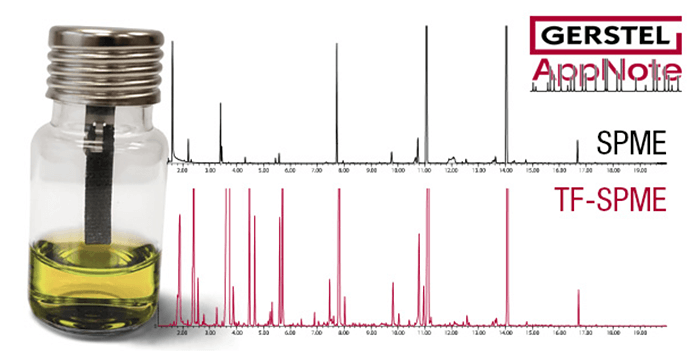Abstract
Alcoholic and non-alcoholic beverages are enjoyed by millions of people around the globe. The aroma and fl avor profi les of each product are unique and made up from a variety of semi-volatile and volatile compounds including aldehydes, ketones, acids, alcohols, terpenes, esters along with various trace level compounds.

Monitoring of these compounds is a necessity for beverage manufacturers in order to ensure consistent product quality. Analysis may also be necessary due to off fl avor or odor complaints. The wide range of concentrations, polarities, and functional groups used in the composition of a fl avor/aroma profi le can make the analysis of the sample diffi cult. Techniques which are simple, use little or no solvent, and encompass a wide range of analytes are desirable. Thin Film Solid Phase Micro-Extraction (TFSPME) is an extension of regular SPME. TF-SPME is more sensitive than regular SPME due to the increased surface area and phase volume, both of which lead to improved analyte recovery. The TF-SPME device is a 20 mm x 4.8 mm carbon mesh sheet impregnated with a sorptive phase. The TF-SPME devices can be used in headspace or immersion mode. In headspace mode, the TF-SPME device is suspended above a solid or liquid sample in an enclosed vial. In immersive mode, it is placed directly in a liquid sample. In both cases, the sample is agitated by stirring. After extraction, the devices are blotted dry and placed in an empty thermal desorption tube. They are analyzed by thermal desorption GC/MS, a technique that is simple to use and requires no solvent. The work presented here demonstrates the application of TF-SPME to the determination of aroma and fl avor components in alcoholic and non-alcoholic beverages.






